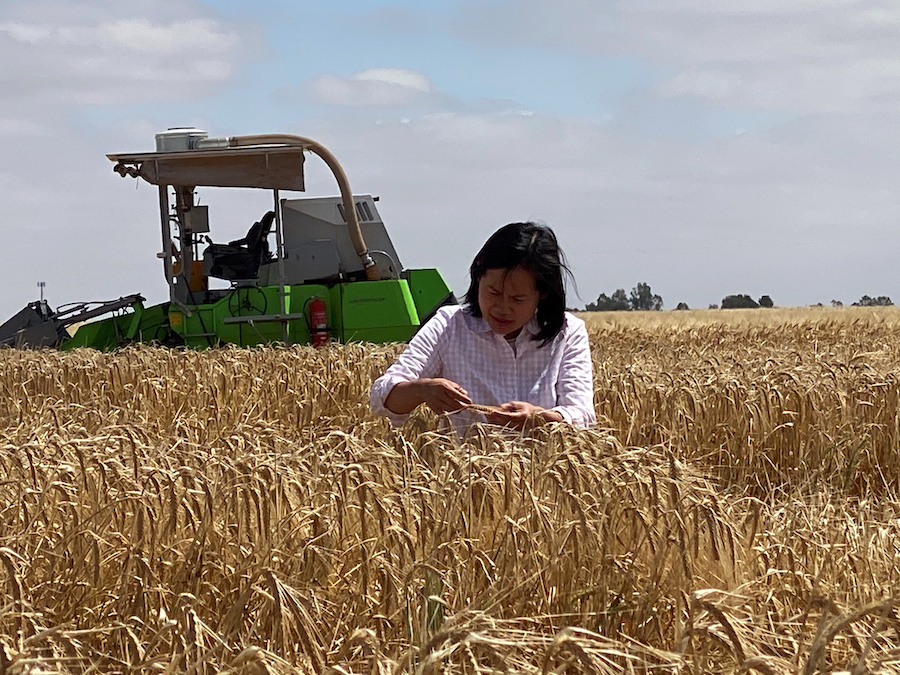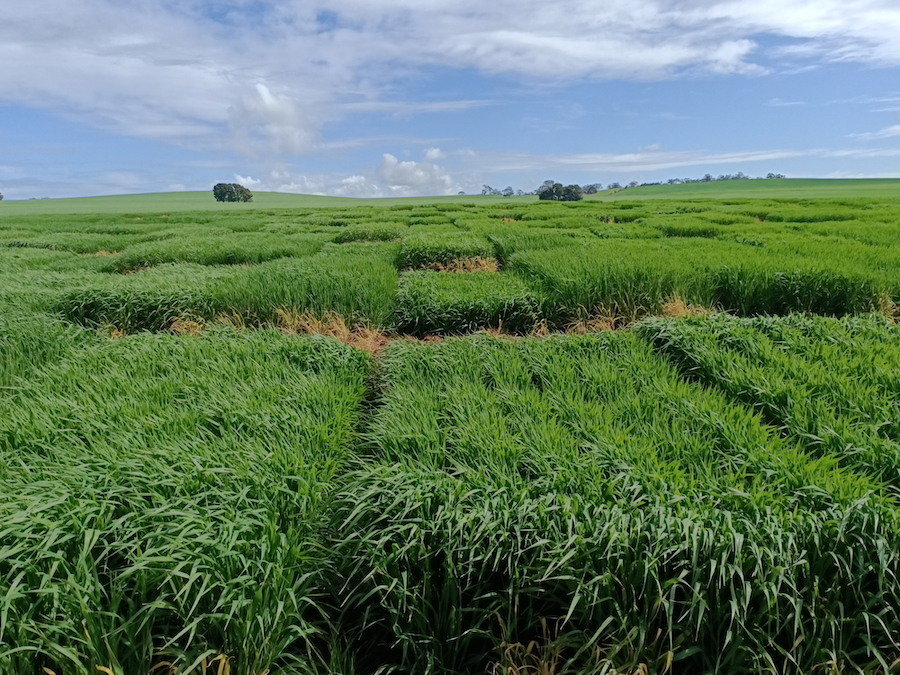The gene pool of grains’ wild relatives is known to contain valuable traits, including resilience to diseases, pests and environmental stresses. Dipping into this gene pool to source traits for cultivated varieties, however, has proved daunting. In the past, transfer of genetic material was random and frequently carried over disadvantageous traits.
Those limitations are now being overcome for barley through the combined use of advanced genome and phenotyping technology that has come of age in the past decade. The new work is being undertaken by Dr Anh Pham at the University of Adelaide in a project led by Professor Jason Able, supported through two consecutive GRDC investments.
Dr Pham says that the project has successfully screened and identified wild genetics that, in preliminary trials, boost barley’s yield potential and yield resilience. That DNA has been genetically mapped and the resulting DNA markers have been used to transfer this genetic material into Australian-adapted cultivars.
“Work is now underway to validate our findings in multi-season field trials,” Dr Pham says. “Our hope is to identify barley lines that have higher yields than current leading varieties or lines that stabilise yields across high and low rainfall.”
Collaborators have additionally used the same pool of wild genetics to identify novel sources of disease resistance.
Dissecting wild genetic diversity

Dr Anh Pham prior to harvesting the first of the field trials of Australian-adapted barley lines containing small amounts of wild barley DNA associated with valuable production traits. Photo: Jason Able
The strategy used at the University of Adelaide is interesting in that it did not involve crossing Australian-adapted cultivars with wild barley lines. Rather, an intermediate step was included that allowed for a more precise and directed strategy of screening smaller pieces of wild DNA within a mostly adapted genetic background.
This extra step involved screening a nested association mapping (NAM) population created by Professor Klaus Pillen at the Martin Luther University in Germany. This population sampled the genetic diversity of 25 highly divergent wild barley lines collected from the Fertile Crescent in the Middle East. Natural recombination was then used to intersperse small amounts of wild DNA into the elite genome of the German spring variety, Barke. In all, the final population consists of 1500 lines and contain an average ratio of 25 per cent wild DNA to 75 per cent elite Barke genome.
In 2015, the University of Adelaide imported this NAM population to Australia to screen its performance under Australian growing conditions.
“It is well-known that domestication created genetic bottlenecks in many crops, including in barley,” Dr Pham says. “So, our aim was to test the wild genetics in Australian environments to see if we could identify, map and transfer DNA that has the potential to improve the productivity of the Australian barley industry.”
Dr Pham proceeded to test and score the performance of the NAM population across a large number of characteristics that ultimately affect yield, such as grain number per ear, thousand-grain weight, flowering time and plant height.
These tests were conducted in the field during the 2015 season (which was exceptionally dry at 25 per cent below-average rainfall) and 2016 (which was unusually wet). Tests were also undertaken at the Plant Accelerator phenotyping facility, with a special emphasis on drought stress.
This phenotyping data revealed the presence of genetic material with the potential to increase biomass and tiller number in water-limited conditions and improve yield. The genetic sources of the most valuable traits were mapped to their DNA source using genome-wide association mapping technology.
“A number of genomic regions were identified that associate with valuable yield-related characteristics, but that have an inverse relationship to biomass,” Dr Pham says. “We saw regions that increase biomass under drought conditions that we are continuing to develop.
“But we also identified a region that reduced biomass and height but increased tiller number in drought-stressed conditions in South Australia. This region was found to improve yield under both saline and normal seasonal conditions in a study on the same population by Professor Mark Tester in Saudi Arabia.”
Targeted transfer of wild genetics
DNA markers linked to the yield-related traits were then used to rapidly transfer the wild DNA into three Australian-adapted barley cultivars – Compass, La Trobe and Granger.
“We are now at the stage where we have 108 Australian-adapted test lines that are ready for validation in field trials along with 12 controls,” Dr Pham says. “This will provide our first proper look at biomass and yields at a plot level under conditions that match grower practices.”

Australian-adapted barley lines that contain yield-enhancing wild genetics underwent field trials in 2020, including at Tarlee, South Australia. Barley lines are shown 13 weeks after sowing. Photo: Jason Able
The first trial was sown in 2020, but its scope was limited to three South Australian sites (Tarlee, Bordertown and Roseworthy) due to COVID-19 travel restrictions. In 2021 and 2022, the aim is to additionally validate the yield performance of this new germplasm at six sites spread across Western Australia and New South Wales.
Work is also getting underway to investigate the grain quality characteristics of the 108 lines to better identify material of greatest benefit to industry. Professor Able is keen to get this happening as soon as possible to spare delays once the germplasm reaches commercial breeders.

The South Australian Tarlee field trial of wild barley genetics shown at harvest. Photo: Jason Able
A series of collaborators have also assessed the imported material for disease resistance characteristics, including to Net form net botch, Spot form net blotch, Spot blotch, Scald, Powdery mildew and Leaf rust.
These collaborations were led by Dr Andrew Milgate at the NSW Department of Primary Industries, Dr Hugh Wallwork at the South Australian Research and Development Institute (SARDI), Dr Davinder Singh and Professor Robert Park at the University of Sydney and Greg Platz at Queensland Alliance for Agriculture and Food Innovation.
Industry uptake
Professor Able and Dr Pham have also prepared the way for the rapid uptake of the new Australian-adapted germplasm by industry, sharing data annually through presentations that are given as part of Breeders’ Week, which is typically hosted by the University of Adelaide. Additionally, those breeders and growers able to travel to SA got to see the new lines at two field days, held in September and October 2020.
“The goal over the next three years as we field-validate the new barley lines is to set up this germplasm to be fast-tracked for use by breeders,” Professor Able says.
More information: Professor Jason Able, 0459 841 586, jason.able@adelaide.edu.au

























































